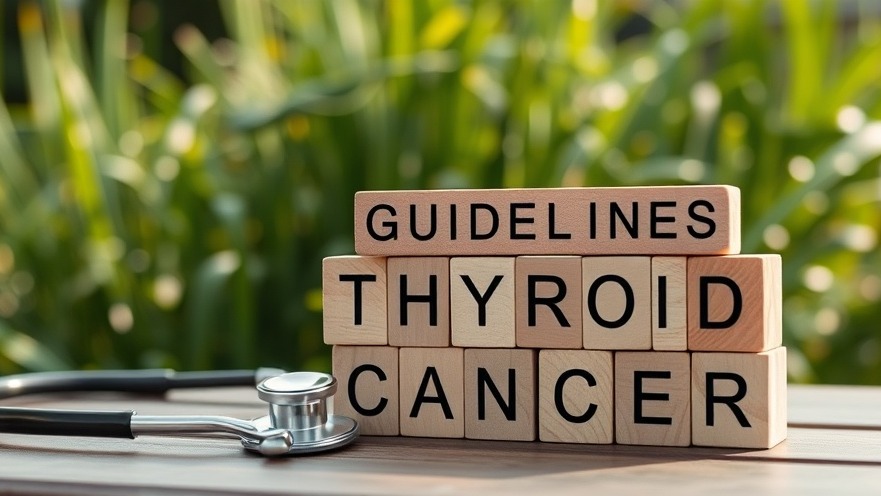
New Guidelines for Differentiated Thyroid Cancer: A Breakthrough for Patients
The American Thyroid Association (ATA) has recently updated its guidelines for managing differentiated thyroid cancer, emphasizing the importance of personalized care and innovative treatment options. This development is not just a technical update; it translates to real-world changes that can significantly enhance the lives of patients who are navigating this diagnosis.
Understanding Differentiated Thyroid Cancer
Differentiated thyroid cancer, which includes conditions like papillary and follicular thyroid cancers, is one of the most common malignancies affecting the thyroid gland. As a mostly treatable disease, advancements in guidelines such as those issued by the ATA ensure that patients receive targeted and up-to-date care. The ATA's new recommendations focus on stratifying the risk for patients based on their specific types of cancer, helping healthcare providers tailor treatment approaches.
What’s New in the Guidelines?
The updated guidelines propose a more nuanced approach to treatment. They emphasize the role of genomic and molecular testing in determining prognosis and treatment pathways, which could drastically change the course of care for individuals diagnosed. With an increasingly personalized treatment strategy, patients can feel empowered about their health journey.
Why These Guidelines Matter
For suburban professionals aged 25 to 60, who often juggle careers and personal lives, understanding these guidelines is essential. Knowledge of such medical trends can aid individuals in discussing treatment options with their healthcare providers and advocating for their own health.
Statistical Insights on Thyroid Cancer
According to recent statistics, thyroid cancer is among the fastest-growing cancers in the United States, with over 50,000 new cases diagnosed each year. The importance of staying informed about the latest medical guidelines cannot be overstated, especially as early detection and treatment can lead to significantly better outcomes.
Potential Consequences of Inaction
As these new guidelines begin to take effect, patients who remain unaware may miss crucial opportunities for better management of their conditions. Engaging with healthcare education and advocating for personal health can prevent devastating consequences that arise from outdated treatment practices.
Actionable Insights You Can Implement Today
By familiarizing yourself with these new ATA guidelines, you can take proactive steps, such as bringing the latest research into your consultations. Patients empowered by knowledge are in a better position to collaborate with their doctors, leading to more personalized treatments that can improve overall well-being.
Emotional Connection: Navigating Thyroid Cancer
Being diagnosed with thyroid cancer can evoke a whirlwind of emotions. Many fear the unknown, but with new, clearer guidelines, patients can transition from uncertainty to a more hopeful outlook on their health future. Sharing stories and consulting with the community can foster support and encouragement.
Conclusion: Embrace the Change for Better Health
It's crucial for individuals to stay updated on the latest medical trends like the ATA's new guidelines for differentiated thyroid cancer. Embracing these changes can lead to improved health outcomes and quality of life for patients and their families.
 Add Row
Add Row  Add
Add 




Write A Comment